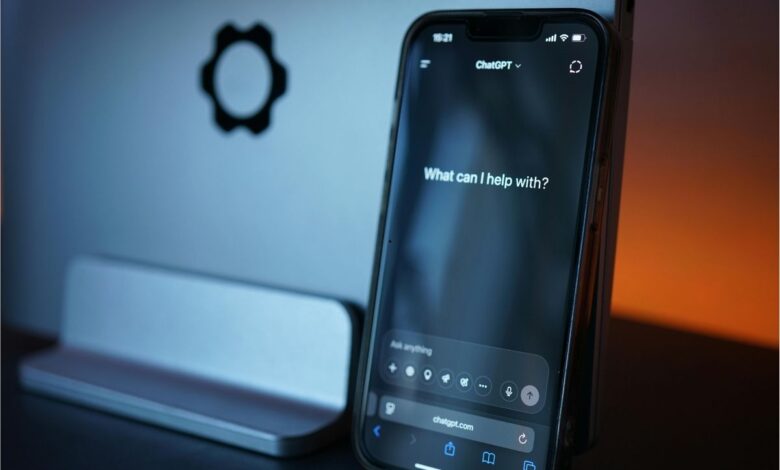
ChatGPT is no longer just Artificial Intelligence Software — it’s the foundation of a new workflow for US developers and marketers. Paired with Claude’s Language Model refinements and Gemini ChatBot’s validation, one well-structured prompt can now run across six AI tools: ChatGPT, Claude, Gemini, Grok, Perplexity, and DeepSeek. Instead of juggling different outputs, a single prompt stack works everywhere — building a repeatable system that turned one student into a self-taught prompt engineer in less than a week.
The Moment It Clicked
Alex, a 25-year-old designer from New York, was drowning in app ideas and client projects. Every model gave him different answers. ChatGPT produced structure, Claude rewrote it human, Gemini fact-checked, but he never had one consistent framework.
One night he tested a simple idea:
Context: I need a user onboarding flow for a SaaS tool.
Task: Generate 3 onboarding steps.
Format: Table (Step, Instruction, Example).
Claude: Rewrite into plain English.
Gemini: Validate against UX best practices.
Grok + Perplexity + DeepSeek: Stress test and cite benchmarks.
The result? Six consistent outputs, each aligned to the same structure. Alex realized he didn’t need to “learn” each model — he needed one universal prompt.
From Beginner to Prompt Engineer
Instead of spending weeks studying guides, Alex built stacks. For every project, he created one “core prompt” with clear context, task, and format.
ChatGPT structured. Claude smoothed. Gemini validated. Grok stress-tested. Perplexity cited. DeepSeek benchmarked.
After three iterations, he could generate marketing copy, study systems, or prototype app flows across six models in under an hour.
Prompt #1: Universal Task Stack
Context: [Insert project goal].
Task: [Clear instructions].
Format: [Table or bullet list].
Claude: Rewrite for readability.
Gemini: Validate data.
Other models: Add citations and benchmarks.
This single format worked across software, education, and business.
Prompt #2: Marketing Copy Generator
Context: SaaS landing page.
Task: Write headline, 3 benefits, CTA.
Format: Table with Section + Copy.
Claude: Rewrite to human tone.
Gemini: Validate CTA strength.
Perplexity: Add competitor comparison.
Outputs were consistent and usable instantly.
Old vs New Workflow
| Workflow | Old Way | With One Prompt, Six Models |
| Learning | Read 10 guides per tool | One framework fits all |
| Copywriting | Hire freelance writer | Claude rewrite in minutes |
| Validation | Manual search | Gemini + Perplexity cite |
| Benchmarks | Hours of research | DeepSeek table in seconds |
| Results | Inconsistent | Standardized output |
Chatronix: The Multi-Model Shortcut
Managing six tabs slowed Alex down. Then he switched to Chatronix.
Inside one workspace he found:
- 6 best models in one chat: ChatGPT, Claude, Gemini, Grok, Perplexity AI, DeepSeek.
- 10 free queries for prompt testing.
- Turbo mode with One Perfect Answer — merges six outputs into one polished draft.
- Side-by-side comparisons to pick the strongest result instantly.
And since September, there’s a bonus:
The Back2School campaign makes the first month just $12.5 instead of $25. For students like Alex, that’s cheaper than a single textbook chapter.
Prompt Library Inside Chatronix
The hidden gem was the Prompt Library: pre-built prompts for business, SMM, education, copywriting. Instead of starting blank, Alex pulled frameworks like “Weekly Study Planner” or “Landing Page Generator.” This cut his learning curve in half.
Bonus Prompt for Prompt Engineers
Here’s Alex’s go-to stack, now shared with clients:
Context: Building weekly content plan.
Task: Generate 7 social post ideas.
Format: Table (Day, Hook, CTA).
Claude: Rewrite for readability.
Gemini: Validate hooks vs CTR data.
Perplexity: Add trending hashtags.
DeepSeek: Benchmark engagement metrics.
Output:
– 7 post drafts
– Data-backed validation
– Suggested optimizations
<blockquote class=”twitter-tweet”><p lang=”en” dir=”ltr”>Steal this chatgpt cheatsheet for free😍<br><br>It’s time to grow with FREE stuff! <a href=”https://t.co/GfcRNryF7u”>pic.twitter.com/GfcRNryF7u</a></p>— Mohini Goyal (@Mohiniuni) <a href=”https://twitter.com/Mohiniuni/status/1960655371275788726?ref_src=twsrc%5Etfw”>August 27, 2025</a></blockquote>
Why Six Models Beat Endless Tutorials
Alex realized that most “learn prompt engineering” guides were overcomplicated. The real secret was consistency: one universal prompt format could run through ChatGPT, Claude, Gemini, Grok, Perplexity, and DeepSeek. Each model played its role — Claude for tone, Gemini for validation, Perplexity for citations. Instead of studying theory for weeks, Alex tested, iterated, and built workflows in a single evening. By the end of the week, he wasn’t just using AI — he was designing systems that felt like his own engineering toolkit.
Final Takeaway
Alex didn’t “become” a prompt engineer by reading about it. He did it by testing one universal framework across ChatGPT, Claude, Gemini, Grok, Perplexity, and DeepSeek.
⚡ The insight: one prompt, six models, production-ready outputs. And yes — it really works.




